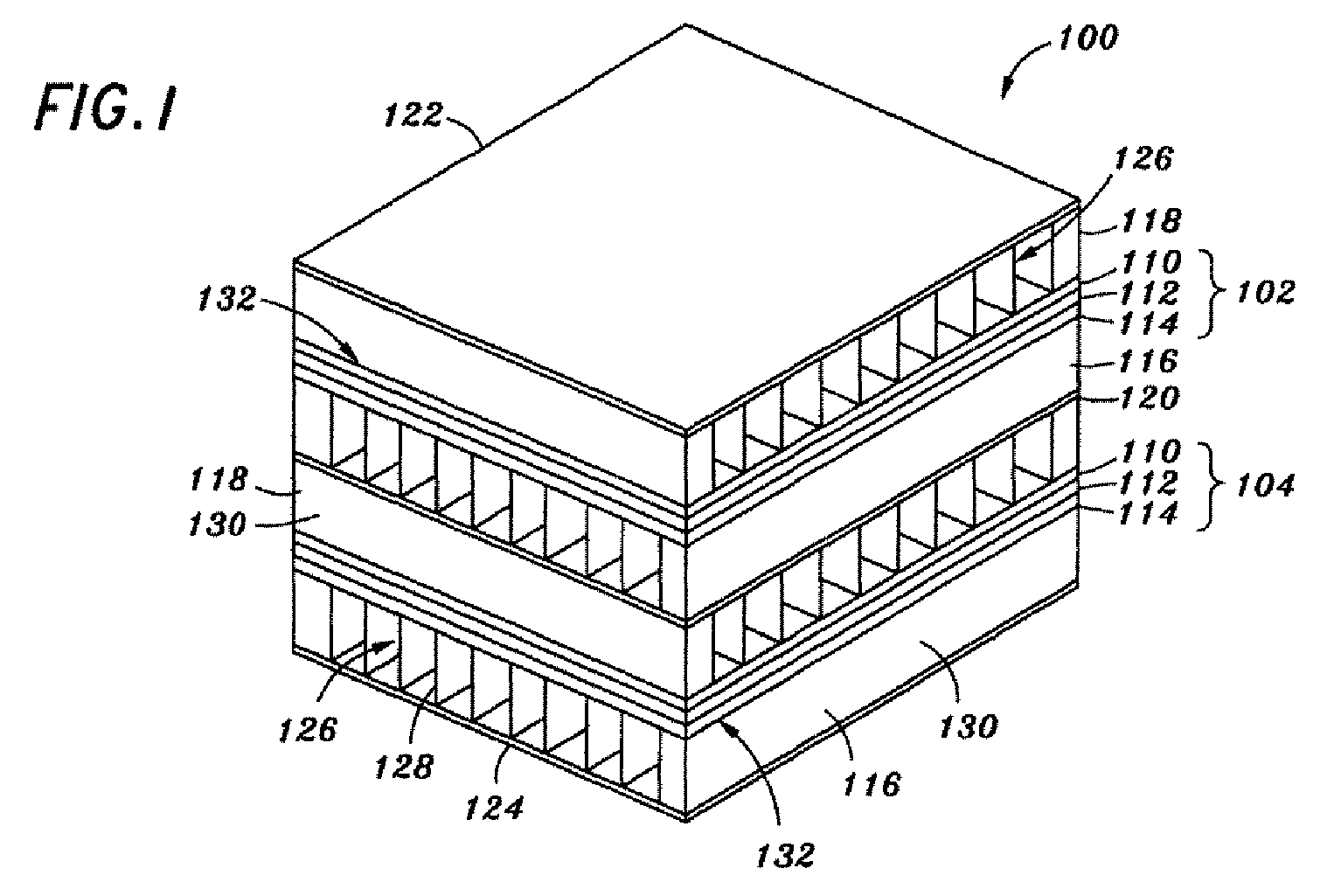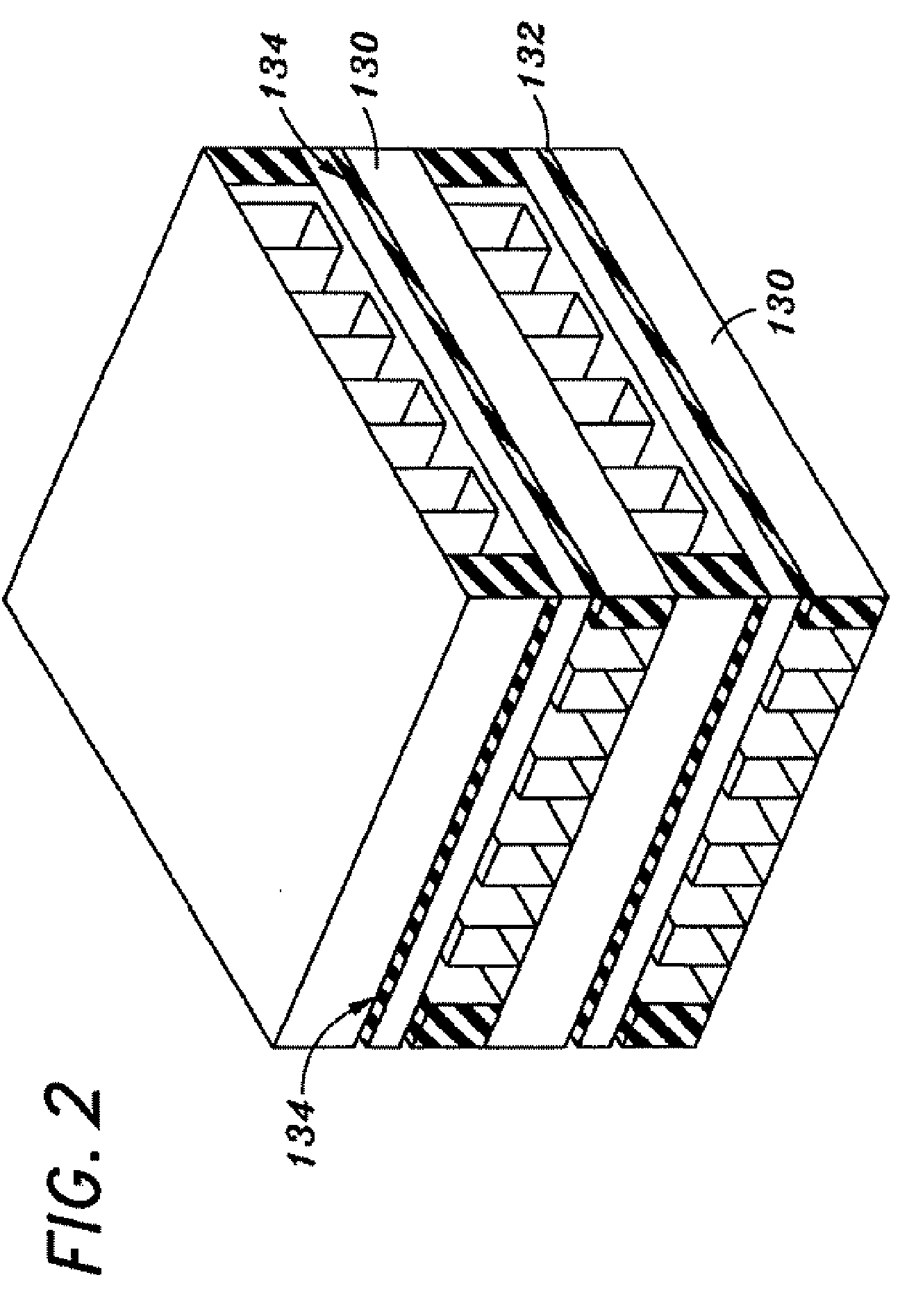Alkali-Free Composite Sealant Materials for Solid Oxide Fuel Cells
a fuel cell and composite sealant technology, applied in the field of composite sealant compositions, can solve the problems of affecting the long-term stability and integrity of the seal, and their own shortcomings or limitations
- Summary
- Abstract
- Description
- Claims
- Application Information
AI Technical Summary
Benefits of technology
Problems solved by technology
Method used
Image
Examples
example 1
Composite Sealant in Blended Powder Form
[0041] First, 20 grams of a glass powder having a composition (mole percent) of 40% BaO, 2% Y2O3, 10% B2O3, 25% SiO2, 5% MgO, 15% CaO, 2% ZnO, and 1% ZrO2 was blended with 4 grams of 8 mol % yttria-stabilized zirconium oxide powder and 1 gram of barium titanate powder in an agate mortar to make a composite sealant mixture. Next, the sealant mixture was applied to a test coupon and heated to 900° C. to make the seal. The temperature was then lowered to 800° C. and held for 100 hours before cooling down to room temperature. The test coupon was found sealed and bonded very well. X-Ray Diffraction (XRD) analysis indicated that the glass in the seal had devitrified / crystallized to become a glass-ceramic.
example 2
Sealant Composition by Addition of Filler to Glass Paste
[0042] First, 40 grams of a glass powder having a composition (mole percent) of 35% BaO, 2% Y2O3, 10% B2O3, 23% SiO2, 22% MgO, 5% CaO, 2% ZnO, and 1% ZrO2 was blended with 10 grams of a solvent / binder system (Alpha-terpineol / Heraeus V-006, 55:45 ratio) to make a glass paste. Then, 2.0 grams of 8 mol % yttria-stabilized zirconium oxide powder was added to 10 grams of the glass paste and mixed to form a composite sealant mixture in paste form.
example 3
Sealant Composition by Mixing Filler Paste with Glass Paste
[0043] First, 40 grams of 8 mol % yttria-stabilized zirconium oxide powder was blended with 10 grams of a solvent / binder system (Alpha-terpineol / Hersaeus V-006, 55:45 ratio) to make a filler paste. Then, 5 grams of the filler paste was added to 20 grams of the glass paste made in Example 2 and mixed to form a composite sealant mixture in paste form.
PUM
| Property | Measurement | Unit |
|---|---|---|
| Fraction | aaaaa | aaaaa |
| Fraction | aaaaa | aaaaa |
| Fraction | aaaaa | aaaaa |
Abstract
Description
Claims
Application Information
 Login to View More
Login to View More - R&D
- Intellectual Property
- Life Sciences
- Materials
- Tech Scout
- Unparalleled Data Quality
- Higher Quality Content
- 60% Fewer Hallucinations
Browse by: Latest US Patents, China's latest patents, Technical Efficacy Thesaurus, Application Domain, Technology Topic, Popular Technical Reports.
© 2025 PatSnap. All rights reserved.Legal|Privacy policy|Modern Slavery Act Transparency Statement|Sitemap|About US| Contact US: help@patsnap.com


